Metal detectorist finds 2,000-year-old dagger wielded by Roman soldier in battle with Rhaetians
Roman dagger finding led to discovery of "lost" battlefield.
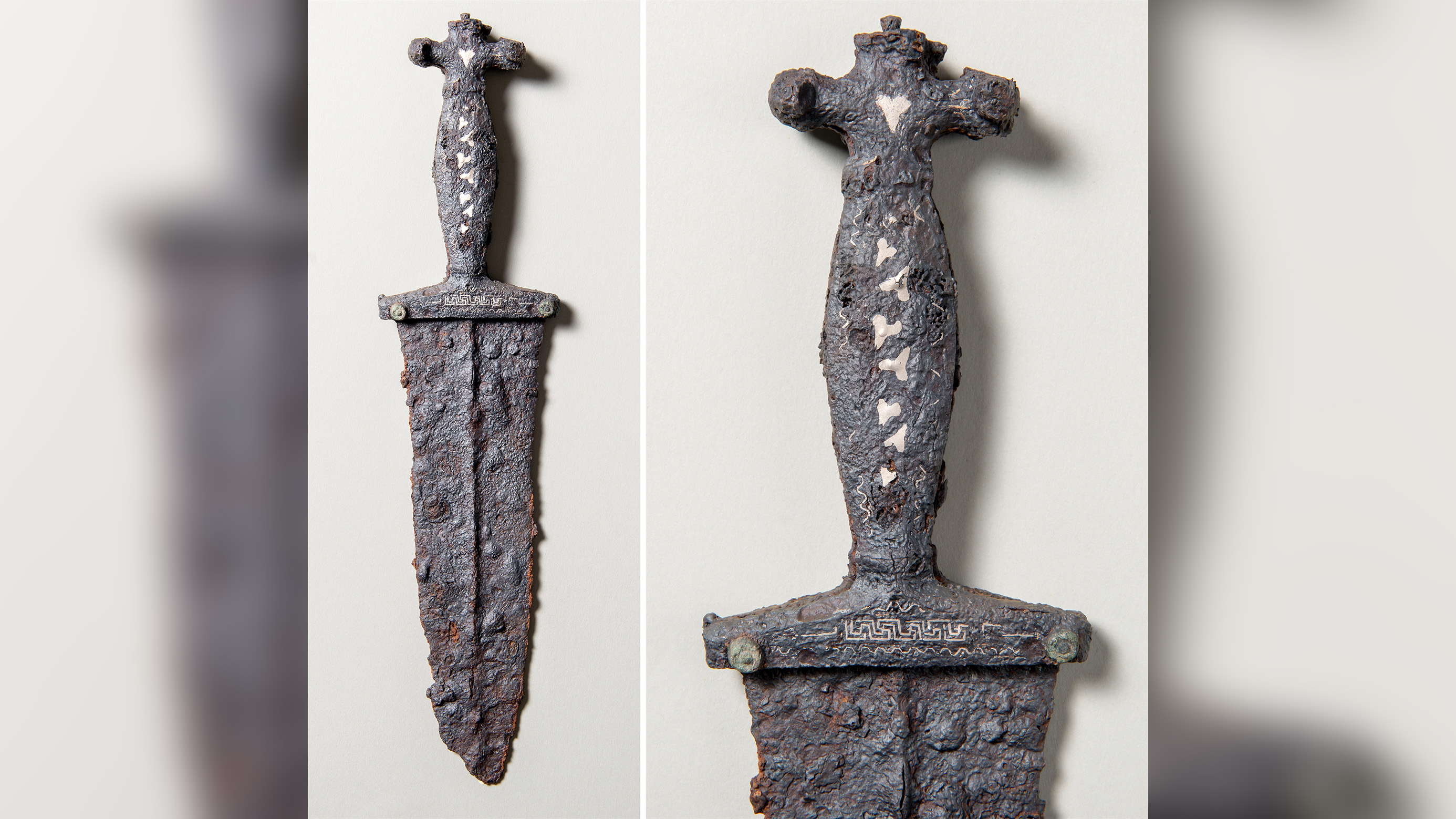
An amateur archaeologist in Switzerland has discovered an ornate dagger wielded by a Roman soldier 2,000 years ago.
That discovery, found using a metal detector, led a team of archaeologists to the site, who then uncovered hundreds of artifacts from a "lost" battlefield where Roman legionaries fought Rhaetian warriors as Imperial Rome sought to consolidate power in the area.
Archaeologists think one of those legionaries may have buried the newfound dagger intentionally after the battle as a token of thanks for a victory. Only four similar daggers — with distinctive features like its cross-shaped handle — have ever been found in former Roman territories.
Related: Photos: Decapitated Romans found in ancient cemetery
Lucas Schmid, then a dental student, started exploring the area near the mountain village of Tiefencastel in Switzerland's south-east Graubünden canton in the spring of 2018. Archaeological excavations in 2003 had unearthed traces of an ancient Roman army nearby, and the area was thought to have been picked clean of any artifacts since then.
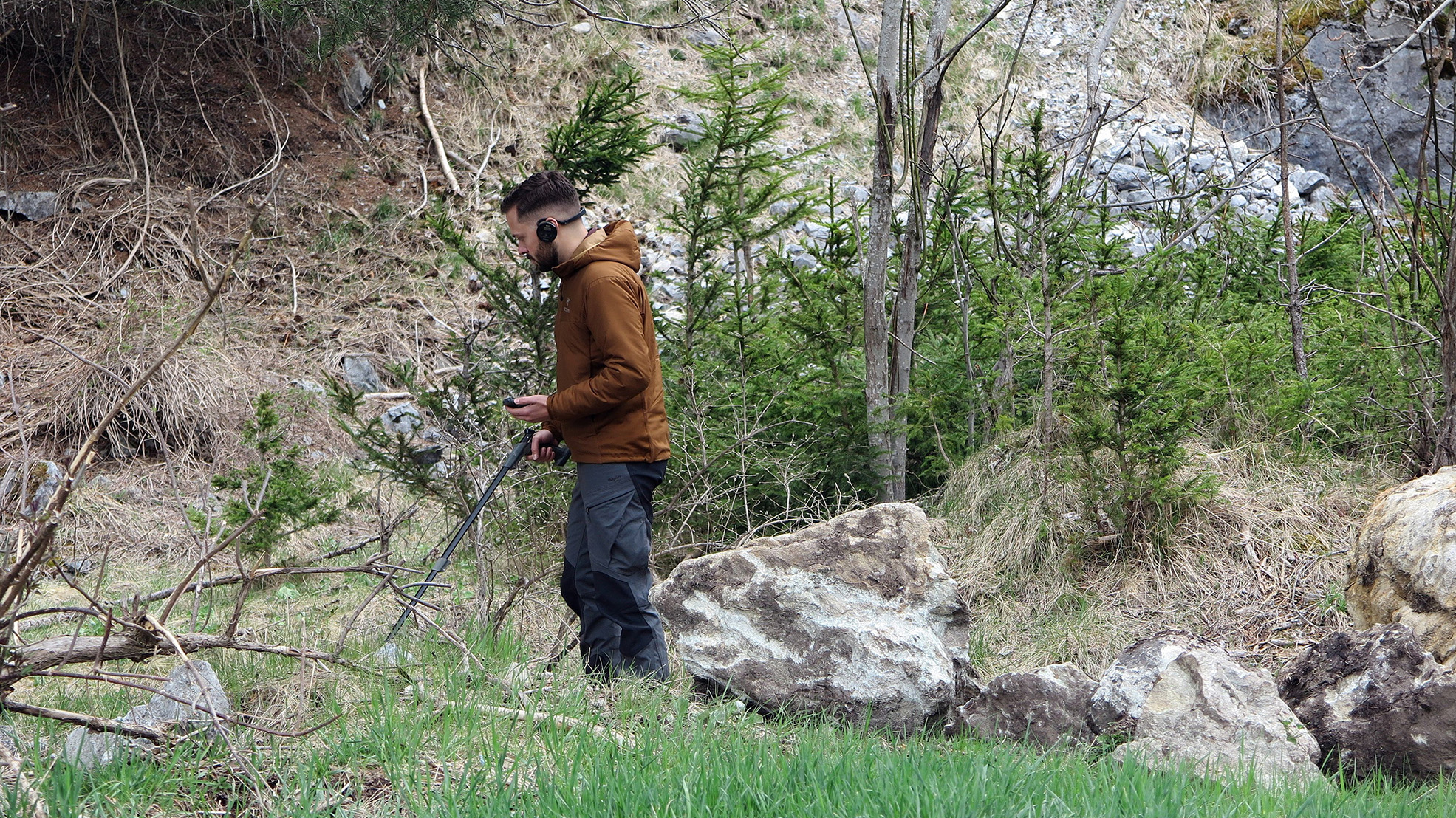
"I suspected that the entire site had not been searched meticulously yet," Schmid told Live Science in an email. He soon began to find buried metal fragments: "it was clear to me that more artifacts could be expected."
Schmid found the dagger — which is decorated with inlaid silver and brass — on a small hill beside a river gorge in the spring of 2019. His metal detector sensed only a very slight signal at first, which suggested a small object. As he started digging, however, Schmid realized that the signal had to be from a large object that was buried relatively deeply — and he uncovered the complete dagger about 12 inches (30 centimeters) below the surface.
Sign up for the Live Science daily newsletter now
Get the world’s most fascinating discoveries delivered straight to your inbox.
For Schmid, this was a once-in-a-lifetime discovery in an unexpected location: "I did not expect to find such an important item at this rather unlikely place," he said.
Ancient battle
Schmid reported the discovery to the canton's archaeological service, the Archäologischen Dienst Graubünden (ADG), which had issued a permit for his metal detecting work in the area; and in September this year, archaeologists (including Schmid) from the ADG and the University of Basel investigated the site.
When the excavations were completed at the end of that month, the team had unearthed hundreds of archaeological artifacts scattered over more than 370,000 square feet (35,000 square meters). The finds include spearheads, lead slingshots, parts of shields, coins and hobnails from the heavy-soled sandals — called "caligae" in Latin — that legionaries wore.
Related: Photos: 1,800-year-old Roman battle site
"It is not only the outstanding individual objects such as the dagger (a pugio) that are interesting, but also the large number and composition of the found objects," study team member Peter-Andrew Schwarz, an archaeologist at the University of Basel, told Live Science in an email.
The slingshots are marked with the letters that show which Roman legion made them, — while the shoe nails and some other weapons, including some of the spearheads, are clearly also of Roman origin, he said.
The archaeologists have also unearthed fragments of swords, parts of shields and spearheads that were part of the armament of the opposing Rhaetians, he said.
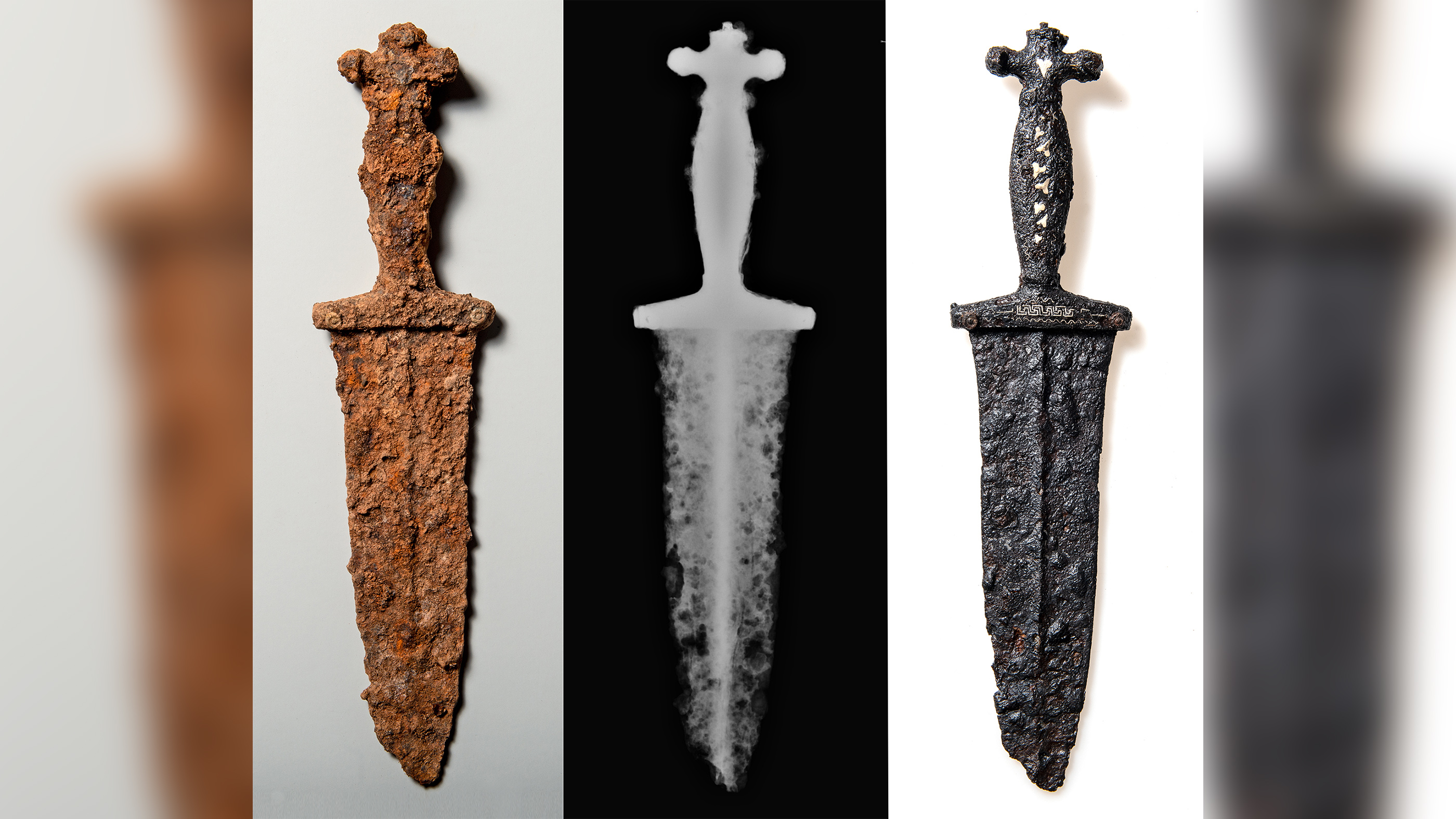
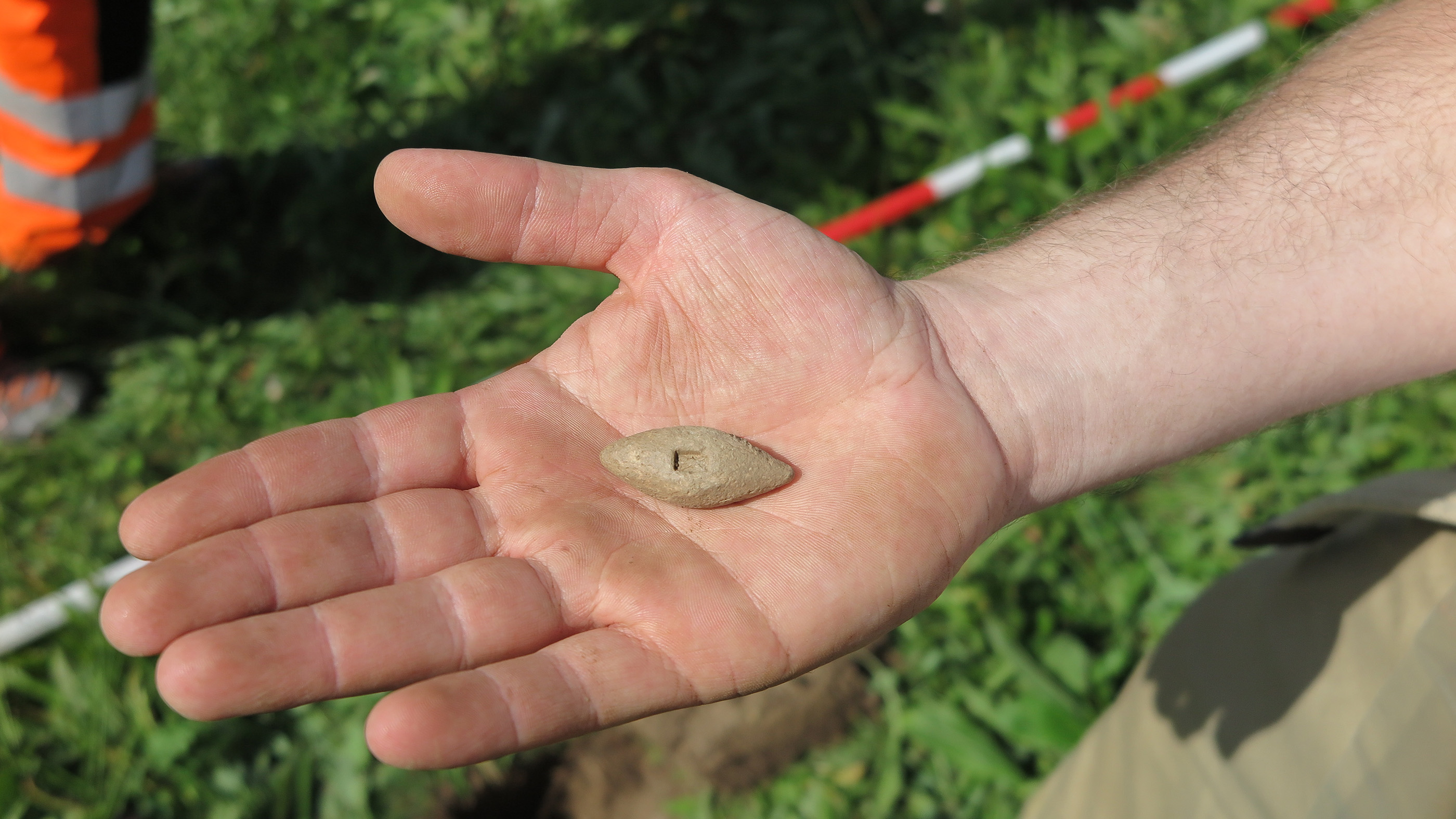
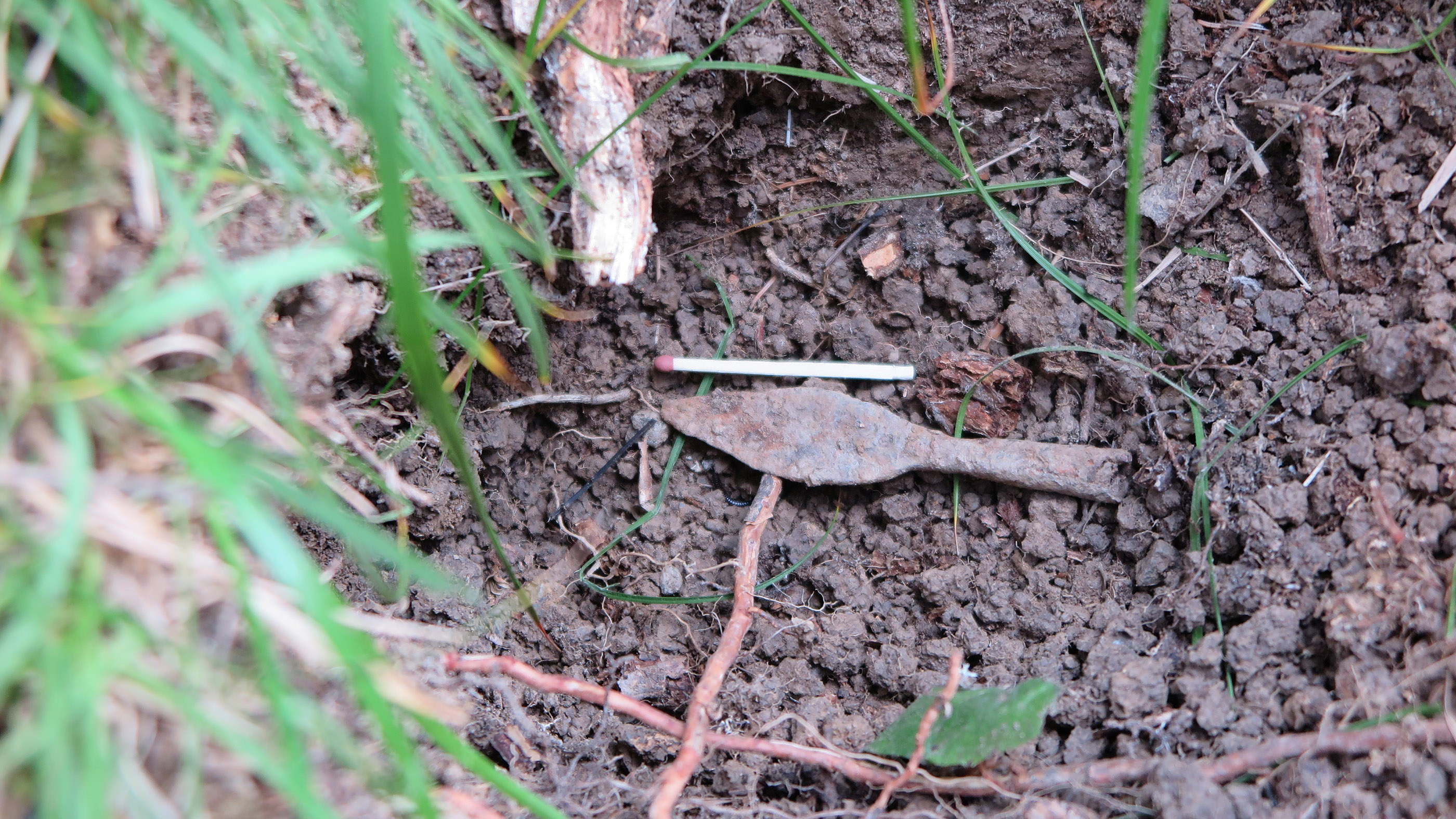
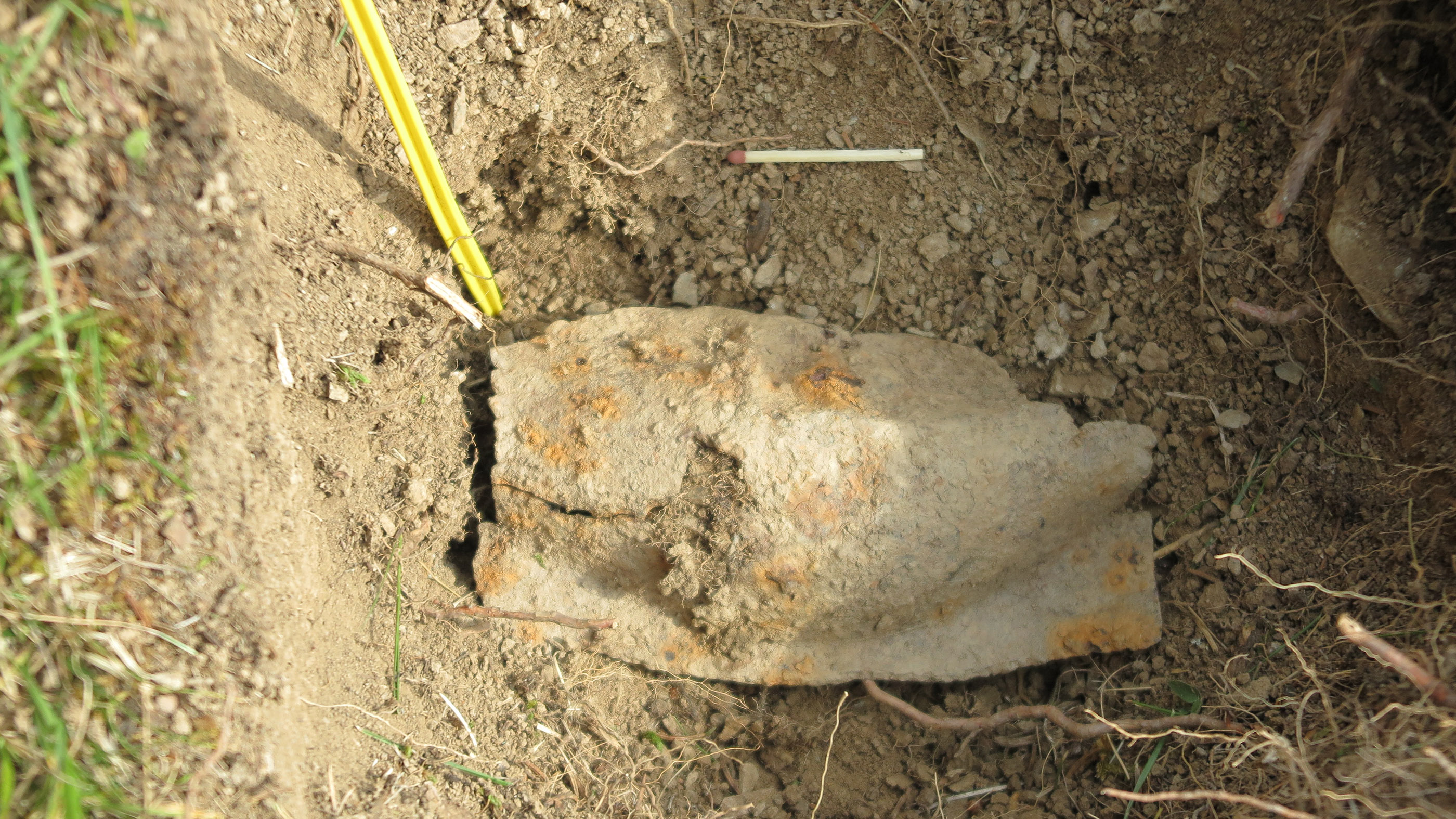
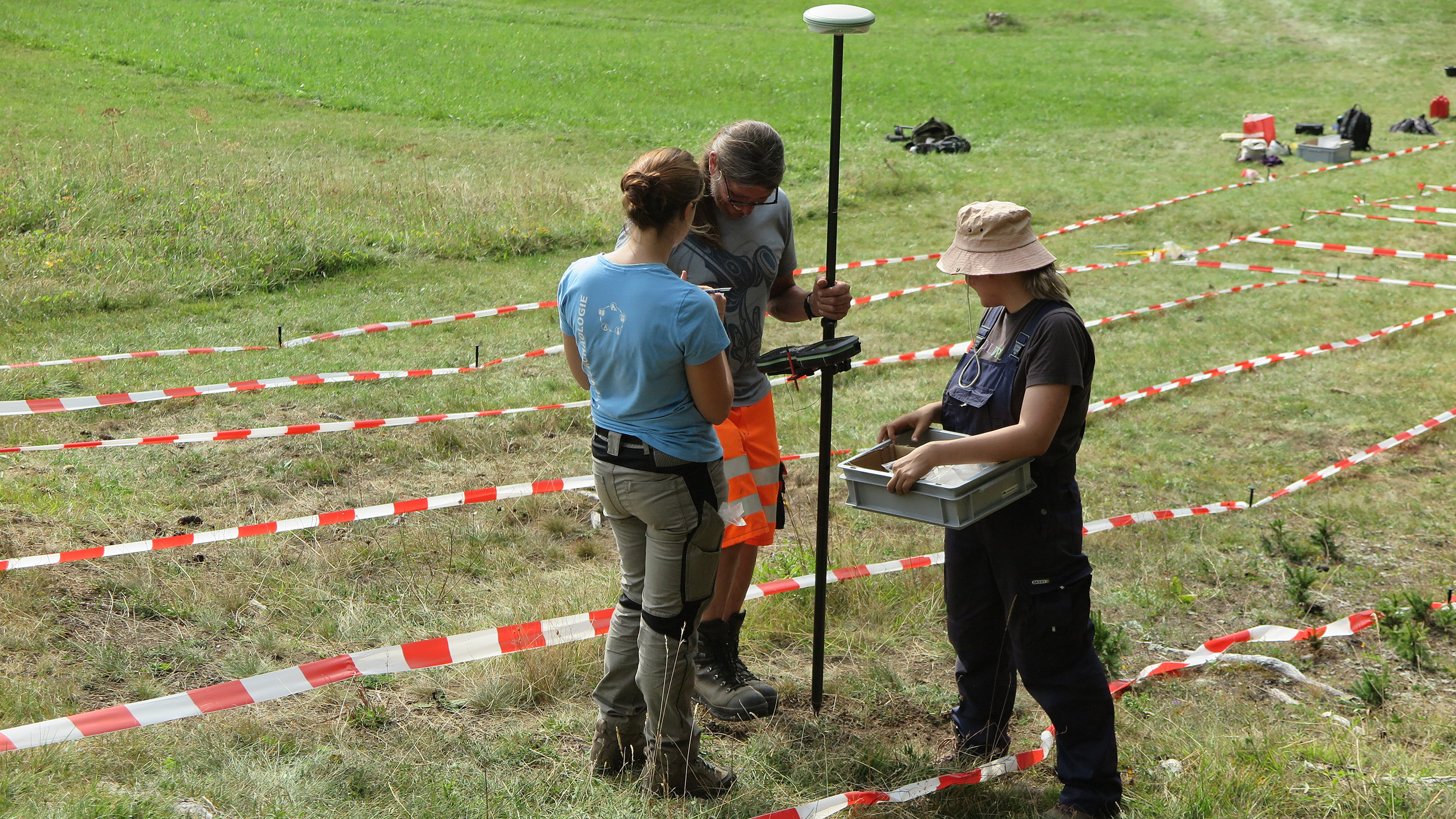
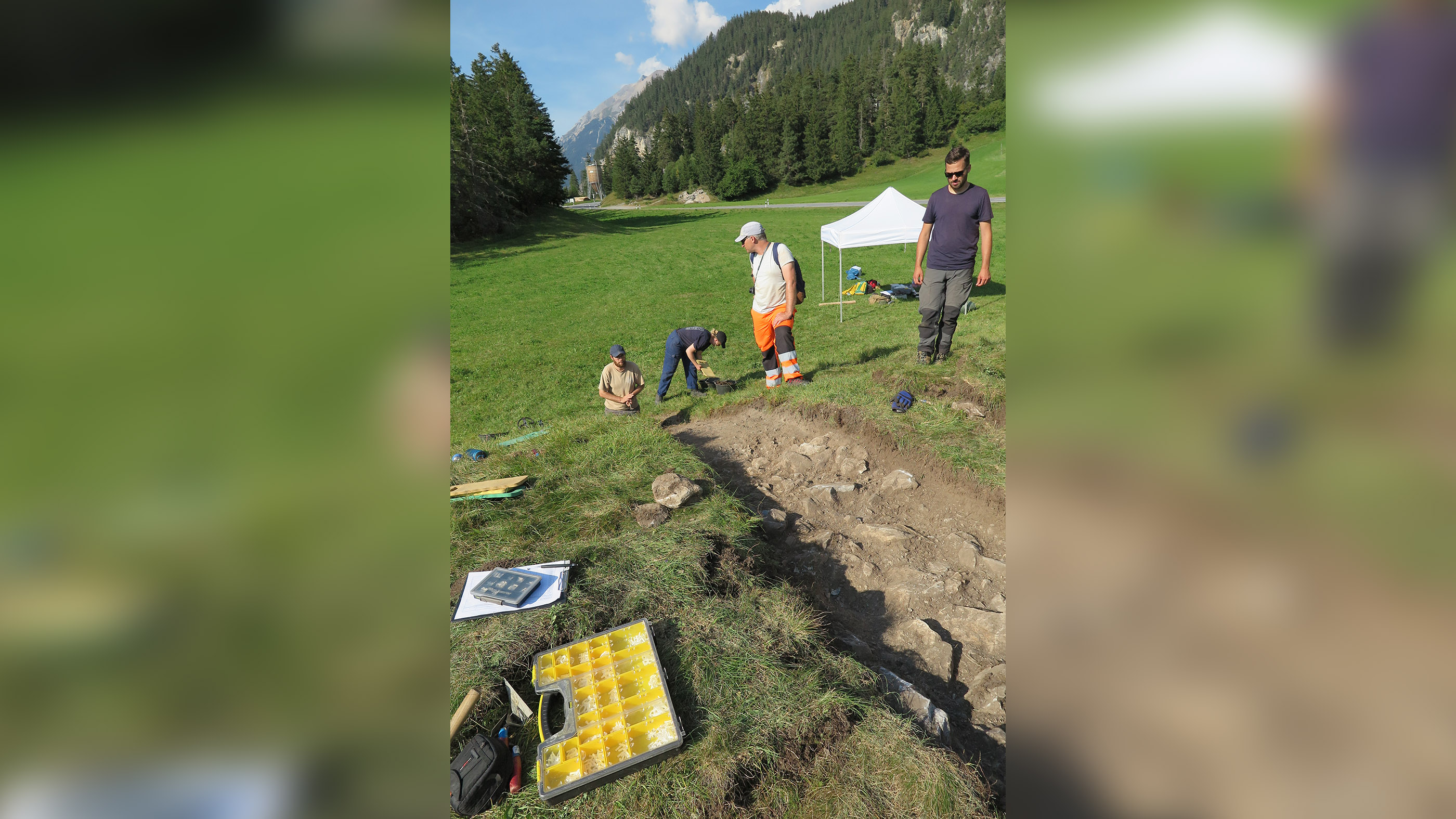
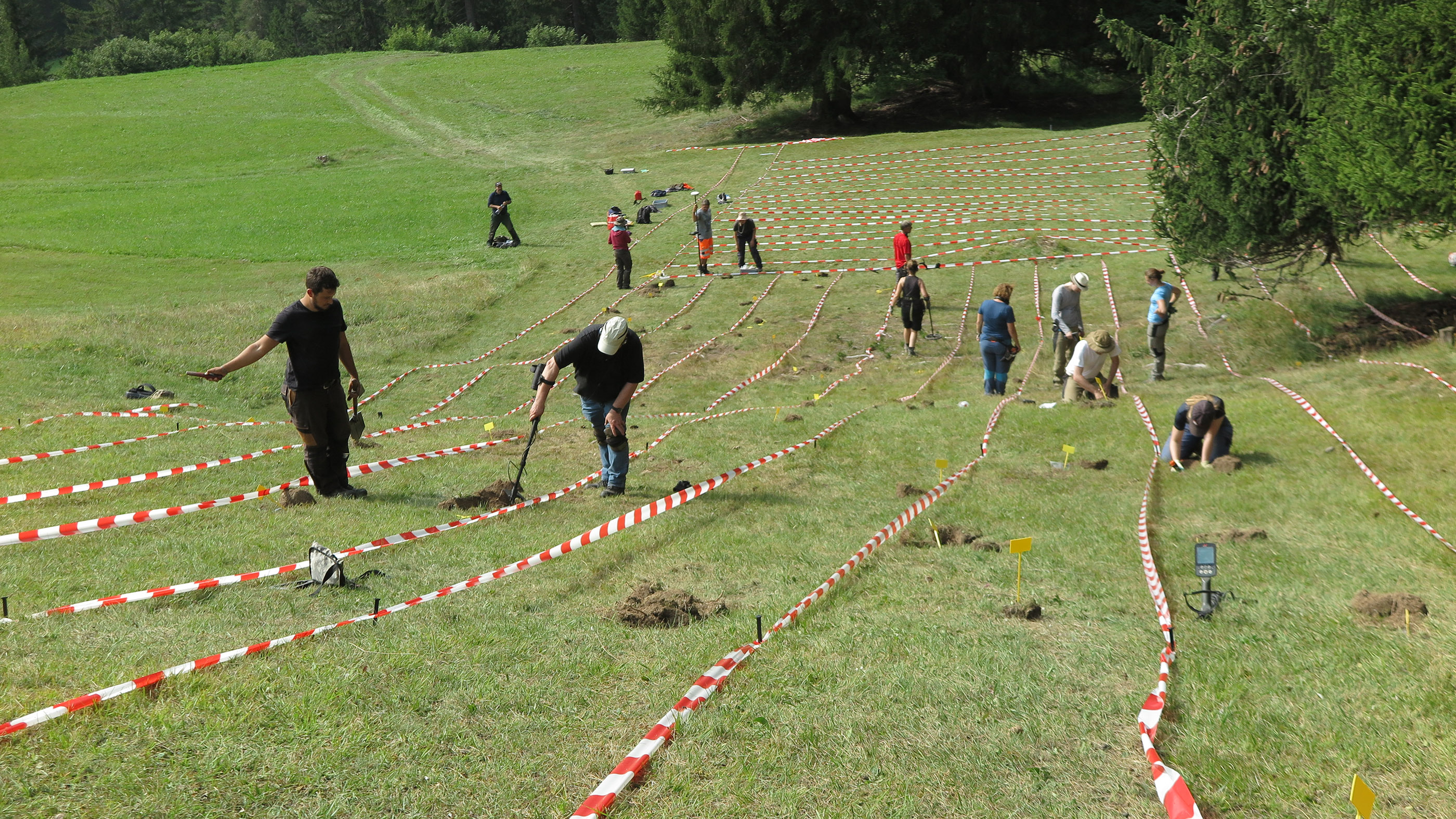


Imperial expansion
The Rhaetians, or "Raeti," were a confederation of Alpine tribes who occupied much of the mountainous areas of what are now Switzerland, Italy, Austria and Germany. What's known of their native language indicates they were related to the Etruscans — a civilization that lived in what is now Italy before Rome was founded. But the Rhaetians eventually came to speak a Celtic language like the neighboring Gauls.
The Rhaetians initially opposed Roman expansion into their mountainous homelands from the second century B.C., and records show conflicts between Roman armies and Rhaetians occurred between 50 B.C. and 30 B.C., said archaeologist Thomas Reitmaier, the director of the ADG.
One of the central questions about the ancient battle near Tiefencastel is whether it occurred at that time or up later, in 15 B.C., when the Roman Emperor Augustus ordered a military campaign in the Alps that finally subjugated the Rhaetians, he said.
Schwarz said the most recent Roman coin found this year was minted between 29 B.C. and 26 B.C. during the reign of Augustus, but it could have been lost a decade later.
"It is conceivable, but not yet proven, that the battle took place in connection with the Alpine campaign of the Emperor Augustus in the year 15 B.C.," he said. "The fieldwork will continue next year, and we assume that more coins or other finds will come to light that allow an even more precise dating."
The Roman dagger is now held by the ADG, as required by Swiss law, where it is being preserved and scientifically evaluated; and Schmid is still involved in the battlefield project, although he recently qualified as a dentist and doesn't expect to become a full-time archaeologist. As of the end of September this year, he had spent more than 70 days on the site in the forest, working alongside the ADG and University of Basel archaeologists.
Originally published on Live Science.
Tom Metcalfe is a freelance journalist and regular Live Science contributor who is based in London in the United Kingdom. Tom writes mainly about science, space, archaeology, the Earth and the oceans. He has also written for the BBC, NBC News, National Geographic, Scientific American, Air & Space, and many others.









